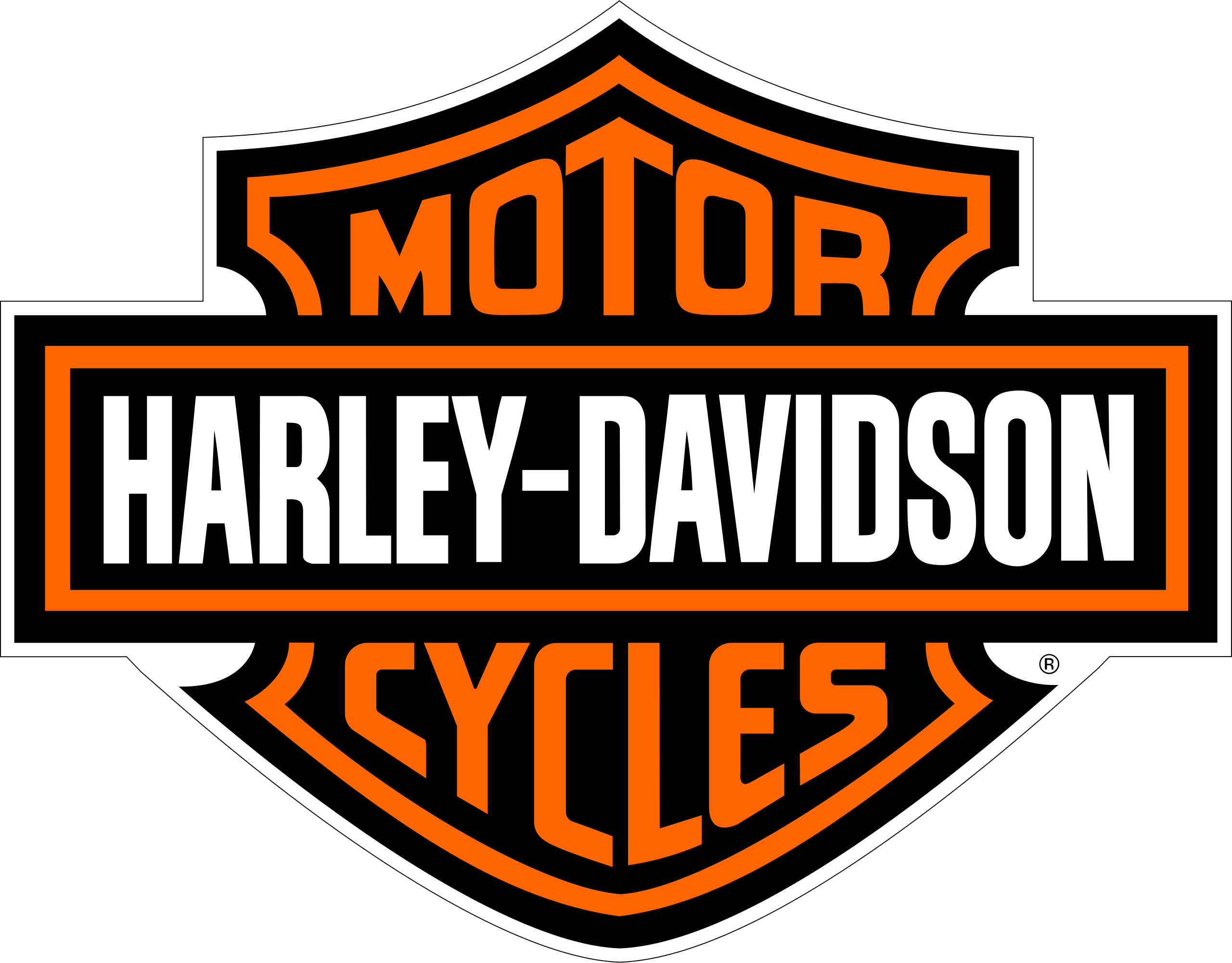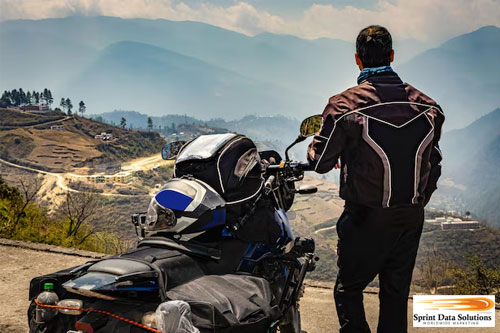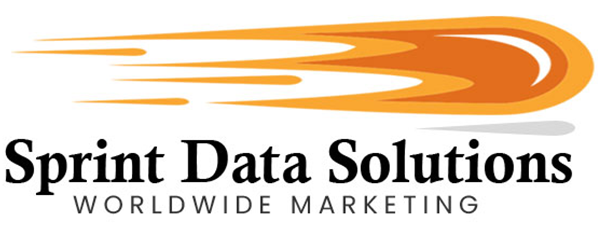Motorcycle Owners Are An Ideal Target Market For Your Business
Motorcycles epitomize the spirit of American freedom, embodying the thrill of the open road and the allure of adventure. For many, the dream of riding stretches beyond the asphalt, offering a unique connection with nature and an intimate view of the country’s diverse landscapes. Motorcyclists are often seen as independent and adventurous souls who crave freedom from the mundane. They value the sense of liberation that comes from hitting the road, whether cruising through scenic backroads, exploring remote areas, or navigating bustling urban environments.
The motorcycle culture is rich with traditions, from the close-knit communities within motorcycle clubs to the excitement of major events like Sturgis and Daytona Bike Week. These gatherings are more than just social events—they’re celebrations of a lifestyle characterized by camaraderie, shared experiences, and a love for the open road. For many, the choice to ride is also driven by practical considerations: motorcycles offer affordability, fuel efficiency, and ease of maneuverability, particularly in congested city streets.
In addition to the practical benefits, the adrenaline rush of speed and the freedom to explore on two wheels captivate riders of all stripes. Whether it’s the joy of a winding road, the challenge of long-distance touring, or the simple pleasure of a quick ride around town, motorcycles offer a dynamic and exhilarating experience that resonates deeply with those who seek both adventure and a sense of belonging.
Targeting the motorcycle rider demographic presents a unique and lucrative marketing opportunity. This audience, characterized by their love for freedom and adventure, is often elusive through conventional marketing methods due to their on-the-go lifestyle. However, with a well-crafted strategy, they can become an ideal market for a diverse range of products and services.
Motorcycle enthusiasts are a passionate group, and reaching them directly can yield substantial rewards. Traditional marketing channels might not effectively capture their attention, as these individuals are frequently traveling or immersed in their motorcycle culture. By utilizing a targeted motorcycle rider contact list, you can bypass the limitations of passive marketing efforts and engage directly with this dynamic group.
This approach allows you to present your products, services, and promotions to motorcycle riders in a more personalized and impactful manner. Whether you’re offering motorcycle accessories, travel gear, or lifestyle products, having access to a contact list tailored to this audience enables you to communicate your offerings more effectively. Direct outreach not only increases the chances of conversion but also fosters a stronger connection with a market that values relevance and personalization in their purchasing decisions.

There Are More Motorcycle Riders Than Ever Before
The motorcycle industry in the United States is experiencing robust growth, driven by a combination of technological advancements, cultural influences, and economic factors. Each year, more Americans are drawn to motorcycles, fueled by innovations in bike technology, the growing allure of motorcycle events, and portrayals of motorcycle clubs in popular media. Additionally, the increasing cost of gasoline coupled with the affordability of motorcycles makes them an attractive option for many consumers.
As a result, the market for motorcycles is set for continued expansion. In 2021, the industry was valued at $105.5 billion, and projections indicate that it will more than double to $233.5 billion by 2031, reflecting a compound annual growth rate (CAGR) of 8.6%. This growth trajectory suggests that the number of motorcycle riders in the U.S. will also see a significant increase, potentially doubling over the next decade.
The positive growth trend is evident from recent statistics: the number of motorcycle riders in the U.S. has surged from 4.3 million in 2002 to 8.6 million in 2022. This doubling in rider numbers over the past twenty years underscores the increasing popularity and mainstream acceptance of motorcycling. With continued advancements in motorcycle design and the expanding appeal of motorcycle culture, the industry is well-positioned for further growth, making it a prime market for targeted marketing efforts and investment opportunities.
Demographics Of Motorcycle Riders
Motorcycle riders span a broad spectrum of demographics, but certain key characteristics define this market. Statistically, the majority of motorcycle riders are male, making up about 81% of the population, while females account for 19%. Riders are found across all age groups, though the median age is 50, indicating a mature and experienced rider base. Approximately 70% of motorcycle riders are married, reflecting a stable demographic.
Education levels among motorcycle riders are notably high, with 42% holding a four-year college degree and 16% having pursued postgraduate studies. This educated segment is complemented by a substantial portion of the riding community that is financially secure: 24% of riders are retired, while 71% are employed full-time, earning an average annual income of $85,300.
The millennial generation is showing significant growth in motorcycle ownership, particularly with a rising interest in electric motorcycles, signaling a shift towards more sustainable riding options. California leads the nation in motorcycle registrations, boasting 800,000 registered motorcycles, while South Dakota has the highest per capita rate, with 1 in 12 residents owning a motorcycle. Vermont follows closely with 1 in 17 residents being motorcycle owners.
On average, motorcycle riders register their first bike at age 26 and exhibit diverse riding habits. While they engage in both on-road and off-road riding, on-road use is twice as common. Collectively, motorcycles cover an impressive 1.5 billion miles annually. This extensive mileage and the growing interest in innovative motorcycle technologies underscore the expanding appeal and market potential within the motorcycle industry.
An Ideal Target Market For Many Industries
There are many products, services, and goods consumed by this active market. Motorcycle riders spend a lot of money on their hobby, but they also need some ancillary services.
Here are some industries that could benefit from a motorcycle rider list.
Auto Insurance
Motorcycle riders cover a lot of ground and need insurance policies that will protect them no matter the state. Motorcycle riders typically need the standard coverages for bodily injury (BI), property damage (PD), and uninsured/underinsured motorists (UM/UIM). Those with newer, custom, or more expensive bikes want comprehensive and collision, also known as “full coverage.” Medical payments and personal injury protection (PIP) are legally required in some states, but all riders can benefit from these coverages. Motorcycle riders also like add-on coverages like roadside assistance, trip interruption insurance, carried contents, and replacement custom parts/equipment (CPE)
Life Insurance
Motorcycle riding, while exhilarating, carries inherent risks, with approximately 5,000 fatalities annually resulting from motorcycle accidents. Given that nearly three-quarters of motorcycle riders have families, ensuring their loved ones are financially protected in the event of an accident is a significant concern. Life insurance policies play a crucial role in safeguarding a family’s financial future, providing peace of mind for riders who want to ensure their dependents are taken care of.
For many riders, especially those who are heavily involved in the sport, life insurance is a vital component of their financial planning. These policies can offer critical protection and support, covering various expenses and providing financial stability in the aftermath of an accident. Riders are increasingly seeking life insurance to address these concerns, ensuring that their families are secure should the unthinkable occur.
Additionally, riders who participate in racing—whether professionally or as amateurs—should consider enhanced coverage options. Racing introduces additional risks and demands more specialized protection. Insurance policies tailored for racing can offer increased coverage limits and specific protections related to the high-risk nature of competitive riding. This includes higher payouts for accidents and injuries, as well as additional benefits that address the unique risks faced by racers.
By integrating comprehensive life insurance and specialized racing coverage into their insurance plans, motorcycle riders can better protect their families and themselves against the inherent risks of their sport. This proactive approach ensures that riders are not only prepared for potential accidents but also have a financial safety net in place for their loved ones.
Travel
The travel industry stands to gain significantly from targeting motorcycle riders, who are known for their love of scenic adventures and off-the-beaten-path destinations. This demographic is particularly drawn to exploring picturesque routes and discovering unique attractions, making them an ideal audience for tourism-focused marketing efforts.
Motorcycle riders are avid travelers who seek out memorable experiences that combine natural beauty with cultural and historical significance. They have a strong preference for destinations that offer more than just the typical tourist fare. Areas that focus on historical landmarks, Americana, or natural wonders are especially appealing to this group. For instance, local museums, historical sites, and both state and national parks are popular among riders, who often plan their trips around such points of interest.

Additionally, motorcycle enthusiasts are inclined to seek out and appreciate distinctive roadside attractions. These unique stops provide a chance to break up their journey with interesting and often quirky experiences. They are also enthusiastic about purchasing souvenirs that commemorate their travels and enhance their riding experience.
By targeting motorcycle riders, businesses within the travel industry can tap into this market’s passion for exploration and adventure. Marketing efforts can highlight scenic routes, historical landmarks, and unique attractions tailored to their interests. Offering promotions or packages specifically designed for motorcycle travelers can further attract this demographic, ensuring they have memorable and engaging experiences that align with their travel preferences.
In essence, the travel industry can leverage a motorcycle rider contact list to connect with a dedicated and enthusiastic audience, driving interest and visitation to destinations that cater to their love of adventure and exploration.
Hospitality can also benefit from this motorcycle rider list. Some riders like to camp on longer trips, but others like to stay in hotels. Campsites, KOAs, and other backcountry campaign offerings are all very attractive for motorcycle riders. Other riders are looking for motels, hotels, short-term rentals, and resorts to stay at while they travel. They especially like places that can accommodate groups, offer secure parking for their bikes, and have comfortable accommodations like breakfast and spa services.
Smart Devices
Smart devices can help motorcycle riders better enjoy their travels. Communication devices like BlueTooth headsets to help riders speak to one another, GPS to support navigation, and cell phones with service in remote areas are all attractive offerings to motorcycle riders. Motorcycle riders also like automotive maintenance gadgets like tire inflators, battery chargers, and malfunction sensor tech. Other gadgets like action cameras, heated clothing, and battery packs are also attractive offerings to motorcycle riders.
Mechanical Tools And Accessories
Many motorcycle riders are also mechanics. That is because when your bike breaks down on the side of the road in the middle of nowhere, having the skills and tools to repair it is essential. Portable tool kits are extremely popular for motorcycle riders and a must for any long trip. Motorcycle riders also need other standard vehicle repair tools like wrenches, socket sets, and tire irons. Motorcycle specialty tools like chain breakers, chain alignment tools, and life tables are also very popular. They also need motorcycle specialty fluids like engine oil, chain lube, and fork oil.
Storage
In the North where motorcycle riding is seasonal and off-road riders both require storage for their vehicles when not in use. In many cases, they will rent a storage unit to house their motorcycle when they are not riding them. Motorcycle riders also need things like dust covers, oil pans, and jacks to support their storage needs. Individuals with collectible and rare bikes also like a high level of security with their storage. Targeting this market is ideal for storage unit facilities especially ones with advanced security features.
Motorcycle Apparel
Motorcycle riders need a lot of specialized apparel. They need motorcycle riding safety gear and attire like helmets, armored jackets, gloves, and boots. Riders also need things to protect them from the elements like long underwear, gaiters, and sweat-wicking skull caps. Motorcycle riders also like to buy casual apparel that communicates to other riders like motorcycle t-shirts, leather jackets, and denim. Motorcycle riders also like some types of tactical and tech gear because of the utility for riding like extra pockets to hold tools. They also need accessories to help store all of their motorcycle apparel such as helmet holders and boot racks.
Motorcycle Parts
Motorcycle riders are big on expressing their individuality. This is often done through the customization of their bikes. Aftermarket motorcycle parts that improve the performance, comfort, and safety of their bikes are extremely popular. Further, many motorcycle riders are amateur and professional mechanics. Many do all their own repairs and maintenance. They require parts and accessories to maintain their motorcycle’s performance. Some like to do full restoration projects so there is an active vintage motorcycle parts market.
Motorcycle Accessories
Motorcycle accessories are also very popular among riders. This includes functional accessories like security systems and features, kickstand holders, comfort grips, and cargo add-ons. Motorcycle riders also love humorous accessories like funny motorcycle helmet accessories, funky valve stems, and sassy decals. Motorcycle riders also like lifestyle accessories like keychains, bumper stickers, and mugs.
Cleaning Supplies
Motorcycle riders are very proud of their bikes. They spend all of their time, energy, and money to make them. In turn, they take really good care of their bikes. Cleaning tools like buckets, brushes, and hoses are all a must for any motorcycle rider. Cleaning supplies like tire cleaner, wax polish, and exterior care solvents are all in demand. They also like to have extensive detailing tools and care products for every part of the bike.

Harley Davidson Motorcycle Riders And More!
Harley-Davidson continues to dominate the U.S. motorcycle market with the largest market share, holding 30.6%. Known for its iconic cruiser and touring motorcycles, Harley-Davidson remains a favorite among American riders, particularly within the cruiser, chopper, and touring bike categories. In second place, Honda commands 17.5% of the U.S. market, driven by its diverse range of motorcycles, including sport bikes, cruisers, and the incredibly popular Gold Wing touring bike. Yamaha holds the third-largest share with 11.3%, offering a variety of models across segments from off-road dirt bikes to sport motorcycles like the YZF-R series.
Following these three giants, Kawasaki and Suzuki make up the next significant portions of the market. Kawasaki is known for its strong presence in both sport and adventure bikes, with the Ninja series being a standout in sport racing. Suzuki, on the other hand, caters to both road and off-road enthusiasts with its versatile lineup, including the GSX-R sports bikes and the DR-Z series of dual-sport motorcycles. BMW, with its advanced engineering and premium pricing, appeals primarily to the adventure and touring motorcycle segments, featuring the popular GS series.
Other notable manufacturers rounding out the top ten in the U.S. market include Indian, Ducati, Triumph, and Moto Guzzi. Indian, America’s first motorcycle company, has resurged with its stylish cruisers and retro-inspired designs, while Ducati’s high-performance sport bikes, such as the Panigale and Scrambler, capture the attention of younger and performance-oriented riders. Triumph has made a name for itself with classic models like the Bonneville, as well as its adventure-focused Tiger series. Moto Guzzi, while niche, maintains a loyal following with its unique transverse V-twin engine design and classic Italian styling.
A standout in global motorcycle history is the Honda Super Cub, which remains the best-selling motorcycle of all time with over 100 million units sold worldwide. Its simple, reliable design and accessibility have made it a popular choice across various markets and rider demographics, offering unmatched practicality and durability.
This competitive landscape showcases the variety of motorcycles available in the U.S., appealing to a wide range of preferences from casual cruisers to high-speed racers, and from adventure seekers to retro enthusiasts. Each manufacturer has carved out a distinct identity within the broader motorcycle community, contributing to the ever-evolving culture of motorcycling in the United States.
Our motorcycle list includes riders of all types of bikes. The list not only includes their contact information but also includes information about their motorcycle. The year, make, model, and VIN are all available.
The Different Types of Motorcycle Riders
Motorcycle riders generally fall into two primary categories based on their usage patterns and lifestyle. The first group consists of riders who rely on motorcycles as their primary mode of transportation. These individuals often reside in warmer climates where year-round riding is possible, particularly in urban areas with heavy traffic, where motorcycles offer a more convenient and efficient way to navigate through congestion. These riders typically choose practical, fuel-efficient models such as scooters, sport bikes, or standard motorcycles that are well-suited for daily commuting and city life. Their choice of motorcycles is driven by necessity, focusing on reliability, low maintenance costs, and ease of maneuverability in urban environments.
The second category includes recreational riders, often referred to as weekend or leisure riders. These individuals typically use cars or other vehicles for their daily commutes and reserve their motorcycles for weekend outings or special occasions. Weekend riders are more likely to live in cooler climates or in suburban and rural areas, where motorcycles are used primarily for pleasure rather than practicality. They tend to favor bikes that enhance the riding experience, such as cruisers, touring bikes, or even custom choppers, valuing comfort and style over utility. For these riders, motorcycling is a hobby, a way to unwind, and a means to connect with fellow enthusiasts, often participating in group rides, rallies, and motorcycle events.
Moreover, this second group often includes collectors and custom motorcycle enthusiasts who invest time and money into personalizing their bikes with aftermarket parts and accessories. Their motorcycles may be a reflection of personal identity, serving as an extension of their lifestyle and passions. Whether taking scenic routes through rural landscapes or attending motorcycle rallies like Sturgis, these riders view their motorcycles as more than transportation—they are a source of joy and a representation of freedom.
Both groups share a passion for riding but differ in their relationship with motorcycles. Primary riders depend on their bikes for daily mobility, often favoring practical, low-cost models. Weekend riders, on the other hand, tend to ride for enjoyment, with a focus on experience, aesthetics, and community. Together, these categories contribute to the diverse culture of motorcycling, each with its own unique needs and preferences when it comes to bikes and accessories.
Motorcycle riders are not a monolith, many ride other models like Indians, Hondas, and Ducatis. Motorcycles are so popular that several subcultures have arisen around the different types of motorcycles. These include:
Choppers, Cruisers, And Lowrider Riders
Choppers, cruisers, and lowriders are iconic styles of motorcycles, often known for their high level of customization and significantly higher costs compared to stock models. These bikes, especially choppers, are frequently modified with aftermarket parts, custom paint jobs, and unique designs that reflect the personal taste of their owners. They typically feature an extended wheelbase, which provides a more relaxed and comfortable riding position, ideal for long-distance rides. However, this length also reduces their maneuverability, making them better suited for open highways than urban environments. The focus is on aesthetics, comfort, and the individuality of each bike, rather than performance.
Riders of choppers, cruisers, and lowriders are often highly skilled mechanics who prefer to do their own maintenance and custom work, treating their motorcycles as both functional machines and artistic expressions. Many of these riders are deeply immersed in motorcycle culture, participating in motorcycle clubs, where camaraderie and shared passion for bikes play a central role. These clubs often organize group rides and attend major motorcycle rallies, such as the legendary Sturgis Motorcycle Rally, where thousands of riders gather to showcase their bikes and celebrate motorcycle culture.
The styling of these bikes is often heavily inspired by mid-century designs, harking back to the golden age of motorcycles in the 1940s, 50s, and 60s. Classic American brands like Harley-Davidson and Indian heavily influence the aesthetic, and many riders go to great lengths to replicate the vintage look with modern engineering. The use of chrome, leather, and retro designs is common, with a focus on capturing the spirit of Americana—an ideal that represents freedom, individuality, and a connection to the open road.
These riders are passionate about the lifestyle that comes with owning and riding custom motorcycles. For them, it’s not just about getting from point A to point B; it’s about the experience, the sense of freedom, and the deep-rooted history of motorcycle culture. They appreciate the tradition and sense of rebellion that motorcycles represent, and many see their bikes as symbols of personal freedom and self-expression. The sense of community is equally important, as these riders often form lifelong friendships within their clubs, united by their love for the open road and the shared history of motorcycle culture.
Touring And Sport-Touring Riders
Touring and sport-touring motorcycles are specifically engineered for long-distance travel, providing riders with both comfort and durability for extended journeys. These bikes are built to accommodate significant amounts of luggage, with features such as saddlebags, top cases, and additional storage options, making them ideal for cross-country trips or multi-day rides. A hallmark of touring motorcycles is their emphasis on rider protection, offering substantial windshields, fairings, and ergonomically designed seating that helps shield the rider from wind, rain, and debris. Many touring bikes also come equipped with advanced safety features such as anti-lock braking systems (ABS), traction control, and rider assistance technologies, ensuring a safer and more controlled ride on long trips.
Sport-touring bikes blend the comfort and functionality of touring motorcycles with the agility and performance of sport bikes. While they also provide ample storage and protection from the elements, sport-touring bikes are designed to handle more challenging road conditions, such as winding mountain passes or uneven rural roads. They often feature more responsive handling, sharper braking systems, and more powerful engines than standard touring bikes, making them versatile for both long-distance touring and more spirited, performance-oriented riding. Their suspension systems are generally more advanced, offering adjustable features to adapt to different terrains and road conditions.
Both types of bikes are often used for commuting as well, particularly by riders who value the added comfort and safety these models offer. The larger frames of touring and sport-touring bikes provide a stable and comfortable riding experience in both urban and highway environments, making them suitable for everyday use. The upright seating position, wide handlebars, and spacious footpegs reduce rider fatigue, making them more comfortable for daily commuting compared to smaller, sportier models.

One reason sport-touring motorcycles tend to be more expensive than other models is due to the wide array of features and accessories they offer. Many come equipped with built-in navigation systems, heated grips, adjustable windscreens, and even advanced infotainment systems for rider convenience. Additionally, sport-touring bikes often feature higher-end suspension systems, larger fuel tanks for extended range, and powerful engines designed for both speed and endurance. Their combination of size, performance, and luxury features makes them premium choices for riders seeking both adventure and comfort.
Riders of touring and sport-touring bikes are often experienced motorcyclists who value versatility and performance. They tend to enjoy a mix of long-distance touring and more technical, challenging rides. Many of these riders take pride in their ability to cover long distances with ease, often embarking on cross-country adventures or exploring diverse terrains. Whether commuting daily or embarking on a weekend trip, riders of touring and sport-touring bikes appreciate the blend of comfort, safety, and performance these motorcycles offer, making them a favored choice for serious riders.
Cafe Racers
Café racers have seen a resurgence in popularity, especially among Millennials and Gen Z riders, who are drawn to their minimalist design and nostalgic aesthetic. These motorcycles are typically lightweight, highly customized, and built from affordable, older models such as the Honda CB series, as well as vintage bikes from the 1950s, 60s, and 70s. Riders of café racers are often skilled mechanics who take pride in building or modifying their bikes to reflect a personal sense of style and performance. These modifications typically involve stripping down the bike to its essentials, with a focus on speed, agility, and a low, aggressive riding position.
Café racers are inspired by the British motorcycle culture of the 1950s, when young riders would modify their bikes to race between cafés in urban areas. This subculture celebrated a rebellious spirit, which continues to resonate with today’s generation of café racer enthusiasts. The design ethos revolves around simplicity and function, with many of these bikes featuring clip-on handlebars, rear-set footpegs, and a distinct retro look. Riders often favor mid-century vintage accessories and apparel, such as leather jackets, open-face helmets, and goggles, embracing a style that reflects the golden age of motorcycling.
While café racers excel in urban environments due to their agility and compact size, they are not designed for long-distance rides or touring. These bikes are built for short, fast rides—whether it’s zipping through city streets or taking part in short-distance races. The riding position is typically more aggressive and less comfortable than other types of motorcycles, which limits their appeal for extended journeys. However, their speed and nimbleness make them ideal for navigating the tight corners and congested streets of urban settings, where café racers thrive.
Customization is a major part of café racer culture. Riders frequently seek out specialty parts and tools to personalize their bikes, often sourcing rare or vintage components to achieve the perfect balance of style and performance. From custom exhaust systems to handcrafted seats and unique paint jobs, café racers are a reflection of their owners’ creativity and mechanical expertise. Many riders take pride in the DIY aspect of maintaining and building their bikes, with the process of customization being as much a part of the experience as the riding itself.
In addition to their love of vintage motorcycles, café racer riders are deeply embedded in the broader retro and vintage culture. They often frequent events like motorcycle shows and vintage rallies, where they connect with other enthusiasts who share their passion for classic bikes. The café racer scene is as much about the community and lifestyle as it is about the bikes themselves, with riders embracing a nostalgic ethos that values craftsmanship, individuality, and a connection to the past.
Though not ideal for long rides, café racers serve as a fun, stylish mode of transportation for short trips and social gatherings. Their lightweight build, retro design, and connection to mid-century British motorcycling culture make them a popular choice for younger riders seeking a blend of history, style, and urban performance. For many, owning a café racer is about more than just riding—it’s about embracing a lifestyle that celebrates freedom, rebellion, and the open road.
Sport Racers

Sport racers, often referred to as sportbikes, are among the lightest and most powerful motorcycles available on the market, built specifically for speed and agility. These high-performance machines are designed with advanced aerodynamics, powerful engines, and lightweight frames to maximize acceleration, cornering, and top speeds, making them ideal for both amateur and professional racing. While their primary appeal lies in their speed and precision handling, sport racers are not built for comfort, which limits their practicality for long-distance travel. The aggressive, forward-leaning riding position is tailored for performance on the track rather than for long touring rides, leading many riders to use these bikes primarily for recreational and entertainment purposes.
Many sportbike riders participate in racing, either at the amateur level or in professional competitions, where speed and skill are tested on a variety of tracks. These riders are often passionate about the racing community, attending track days, motorcycle races, and even engaging in friendly competitions with other riders. Customization is a key part of the sportbike culture, and riders frequently invest in aftermarket parts to enhance both the performance and appearance of their bikes. Popular modifications include performance exhaust systems, upgraded suspension, and engine tuning, as well as aesthetic enhancements like custom decals, LED lights, wraps, and fairings that make the bikes stand out on the street or track.
Sportbike enthusiasts often collaborate with specialized mechanics to fine-tune their machines for optimal performance, particularly for racing conditions. Many of these riders take pride in personalizing their bikes, turning them into unique reflections of their style and performance needs. Beyond performance upgrades, sportbike riders also embrace modern technologies that enhance their riding experience. Advanced features like quick shifters, traction control systems, and electronic suspension adjustments are highly sought after, helping riders improve their control and safety at high speeds. Given their technical expertise and interest in cutting-edge gear, sportbike riders are frequently early adopters of new technology, both for their motorcycles and their riding gear.
Safety is a top priority for sportbike riders, especially given the high speeds at which they typically ride. As a result, they invest in advanced protective gear that is specifically designed for the rigors of sport riding. Full-face helmets, armored jackets, gloves, and racing boots with reinforced protection are standard among this group, providing essential safeguards against potential crashes. Many riders also use racing suits with integrated padding and airbag systems for additional safety during high-speed rides.
The sportbike community tends to skew younger compared to other motorcycle segments, with many riders in their 20s and 30s. This younger demographic is not only drawn to the thrill of riding fast, high-performance machines but also to the technological innovations that come with modern sportbikes. Riders in this group often engage with the latest trends in motorcycle technology, including smart helmets, communication devices, and GPS systems that enhance their riding experience. Their openness to advanced technology also extends to the use of digital platforms and social media, where they share their passion for sportbikes, customization projects, and racing activities.
Ultimately, sportbike riders are driven by a passion for speed, competition, and the excitement of pushing the limits on two wheels. Whether they’re racing on a track, carving through twisty mountain roads, or simply enjoying a weekend ride, these riders are part of a dynamic, performance-oriented community. They appreciate the engineering excellence behind sportbikes and continually seek out ways to enhance their experience, making this segment of motorcycling one of the most innovative and evolving in the industry.
Dual Sport And Motocross Riders
Dual sport and motocross riders are known for spending the majority of their riding time off-road, tackling rugged terrains, dirt tracks, and challenging obstacles. Dual sport motorcycles are designed to offer the best of both worlds, capable of handling both on-road and off-road environments, making them versatile for riders who enjoy commuting through urban and suburban areas during the week while heading off-road on weekends. These bikes are equipped with features such as knobby tires, long-travel suspension, and higher ground clearance, which allow them to tackle rough trails while remaining street legal for everyday use. Riders of dual sport bikes often live in areas that allow them quick access to off-road trails while also being close enough to urban centers for daily commuting.
Motocross riders, on the other hand, are more specialized, focusing primarily on off-road riding. These riders typically live in exurban or rural areas where they have access to open land, dirt tracks, and motocross courses where they can ride without the constraints of traffic or road regulations. Motocross bikes are built purely for off-road performance, with lightweight frames, powerful engines, and high-performance suspension systems designed to handle jumps, rough terrain, and sharp turns. Riders often engage in a variety of competitive events, including motocross races, enduro races, hill climbs, and cross-country events, where they test their skills and endurance against other riders in challenging conditions.
Both dual sport and motocross riders are often highly skilled mechanics. The demanding nature of off-road riding requires constant maintenance and fine-tuning of their bikes to keep them in peak condition. Many riders take pride in their mechanical abilities, regularly performing upgrades and modifications to improve the safety, performance, and durability of their bikes. Whether it’s reinforcing the frame, upgrading the suspension, or installing aftermarket parts such as handguards, skid plates, and exhaust systems, dual sport and motocross riders are always looking for ways to enhance their riding experience. Some also get involved in restoration projects, breathing new life into older off-road motorcycles and adapting them for modern use.
In addition to their mechanical skills, dual sport and motocross riders, like their sportbike counterparts, are serious about safety. The inherently dangerous nature of off-road riding, which involves tackling uneven terrain, high-speed jumps, and the risk of crashes, means that protective gear is an essential part of their riding equipment. These riders invest in advanced riding gear such as full-face helmets with additional visors for dirt and debris, armored jackets, padded gloves, knee and elbow guards, and motocross boots designed to protect their feet and ankles during jumps and landings. Some riders also wear neck braces and body armor to further protect against the high-impact nature of the sport.
Beyond the competitive side of motocross and dual sport riding, many enthusiasts enjoy the social aspect of the community. Off-road riders often form tight-knit groups and participate in group rides, rallies, and adventure tours, where they can explore new trails, challenge themselves, and bond over their shared love of off-road motorcycling. These group events often take riders to remote locations, where they can experience the thrill of navigating rugged landscapes, from deserts to forests and mountains.
In terms of demographics, dual sport and motocross riders tend to be younger, similar to sportbike riders, but their passion for adventure and exploration attracts a diverse range of ages and backgrounds. The appeal of off-road riding lies in its challenge, thrill, and the unique skill set required to master it. These riders are also tech-savvy, frequently using GPS devices, communication systems, and other advanced equipment to track their rides and enhance their performance. They also share a love of aftermarket parts and accessories that allow them to personalize their bikes, making them more capable of tackling different off-road environments.
Overall, dual sport and motocross riders represent a dynamic and adventurous segment of the motorcycle community, drawn to the freedom and challenges of off-road riding. Whether they’re racing on dirt tracks or exploring remote wilderness trails, these riders are constantly pushing the limits of their bikes and their own abilities, combining a passion for mechanics, customization, and high-adrenaline performance.

We’ll Help You Access This Growing Market
Sprint Data Solutions Worldwide Marketing is a proud Service-Disabled Veteran-Owned business, originally founded in Las Vegas, with a commitment to delivering top-tier marketing solutions through one of the largest and most accurate databases available. We specialize in providing highly detailed, customized specialty lists, each meticulously curated to ensure the success of your marketing campaigns. Our motorcycle riders list stands out as one of the most comprehensive in the industry, featuring detailed demographic, psychographic, and lifestyle data on riders, allowing you to pinpoint your target audience with precision.
In addition to basic rider information, our list goes deeper by offering specifics about the motorcycles themselves, including the make, model, year, and VIN, giving you unparalleled insight into the consumer’s preferences and behaviors. Whether your focus is on accessories, gear, aftermarket parts, or any motorcycle-related service, our lists provide the intelligence needed to hyper-personalize your marketing efforts for maximum engagement and conversion rates. With the ability to segment by bike type, riding frequency, geographic location, and much more, you can tailor your approach to resonate deeply with your target audience.
What sets us apart is our commitment to data accuracy and relevance. Every list is continuously updated, vetted, and certified to ensure it meets the highest standards, including USPS verification and adherence to national change-of-address protocols. This ensures that your campaigns reach the right people, minimizing wasted outreach and maximizing your return on investment (ROI). Additionally, our expertise in AI-driven analytics and machine learning means that we can help you refine your campaigns further, identifying key trends and insights that will enhance the effectiveness of your strategy.
At Sprint Data Solutions Worldwide Marketing, we understand that in today’s competitive marketplace, hyper-personalization is key. Our extensive motorcycle riders list equips you with the tools needed to build a personalized connection with each rider, ensuring that your messages are not just seen but acted upon. Whether you’re targeting seasoned motorcycle enthusiasts or casual weekend riders, our data enables you to craft highly targeted campaigns that speak directly to their passions, needs, and preferences.
By leveraging our data-driven insights, you’ll be able to create more effective marketing strategies that result in higher engagement, increased customer loyalty, and improved sales performance. Our lists are perfect for businesses looking to break into niche markets or refine their targeting strategies for higher returns. Whether you’re focused on product launches, direct mail, email campaigns, or digital marketing efforts, Sprint Data Solutions Worldwide Marketing ensures that your efforts are backed by the most reliable data available, allowing you to unlock new opportunities and achieve your business goals.
At Sprint Data Solutions Worldwide Marketing, we adhere to rigorous data collection and validation protocols to guarantee the highest possible level of accuracy and reliability in all of our lists. Our commitment to precision begins with the careful sourcing of data, followed by continuous, comprehensive quality checks. We utilize advanced certification systems, including the National Change of Address (NCOA) and the Certified Address Accuracy System (CAAS), to ensure that our data is up-to-date and fully compliant with postal standards, maximizing the success of your direct marketing campaigns.
Each list is meticulously vetted through multiple layers of screening processes, ensuring that the information you receive is not only accurate but also relevant to your specific marketing needs. This includes cross-referencing data points to eliminate duplicates, outdated entries, or inaccuracies, so you can confidently reach the right clients with every campaign. Our attention to detail allows for precise micro-targeting, enabling you to deliver highly personalized messages that resonate with your audience and drive higher engagement.
Beyond standard checks, we employ sophisticated data hygiene practices that include automated and manual reviews, ensuring that all entries are thoroughly inspected for correctness. Our lists are not just verified for accuracy—they are optimized for performance. Whether you’re targeting consumers for direct mail, email campaigns, or telemarketing, our data is tailored to help you reach your ideal prospects with pinpoint precision, resulting in higher conversion rates and greater ROI.
We also incorporate machine learning and AI-driven analytics to continuously refine and enhance the quality of our databases. These technologies allow us to identify emerging trends and insights, helping you stay ahead of the competition by adjusting your strategy in real time based on the most current and relevant data. At Sprint Data Solutions Worldwide Marketing, we understand that accuracy and relevancy are critical to successful marketing, and our robust data collection protocols are designed to ensure you always have access to the most effective tools for reaching your target audience.
Target The Right Motorcycle Riders For Your Campaign
With our robust data collection and verification system, Sprint Data Solutions Worldwide Marketing ensures that you’ll be able to reach the right motorcycle riders with unmatched accuracy and precision. Our motorcycle rider lists are highly customizable, allowing you to filter and sort by an array of demographic, psychographic, and lifestyle categories. This flexibility helps you fine-tune your marketing approach, ensuring that you target the most relevant segments of motorcycle riders with messaging tailored to their specific interests and preferences. Whether you’re focusing on geographic location, bike type, age group, income level, or riding habits, our lists provide the detailed data you need to optimize your outreach.
Our team of experts will work closely with you, offering guidance on how to effectively navigate and utilize the data to get the highest return on investment (ROI). We don’t just provide a list—we partner with you to help refine your marketing strategies, ensuring that you reach your target audience with the right message at the right time. Whether you’re executing direct mail campaigns, email marketing, cold calling, or simply gathering valuable market insights for future campaigns, our motorcycle rider lists will empower you to engage with riders across the United States in a meaningful way.
Our data covers not just basic contact information but also in-depth details about the motorcycles themselves, including make, model, year, and VIN. This level of specificity allows for hyper-personalized marketing, enabling you to promote products and services that speak directly to each rider’s preferences. Whether you’re promoting motorcycle accessories, gear, insurance, or events, our data ensures that your marketing efforts are highly targeted and efficient. Our lists are also continuously updated and verified, so you can trust that your campaigns will always be based on accurate and up-to-date information.
No matter the scope or scale of your marketing campaign, Sprint Data Solutions Worldwide Marketing provides the tools and expertise needed to help you successfully reach and engage with motorcycle riders nationwide. By leveraging our comprehensive data and expert support, you can enhance your outreach, increase conversion rates, and ultimately drive more business from one of the most passionate and engaged consumer groups in the market.
When you’re ready to get started, contact us. Our helpful team at Sprint Data Solutions Worldwide Marketing will make sure that you are reaching your goals.






